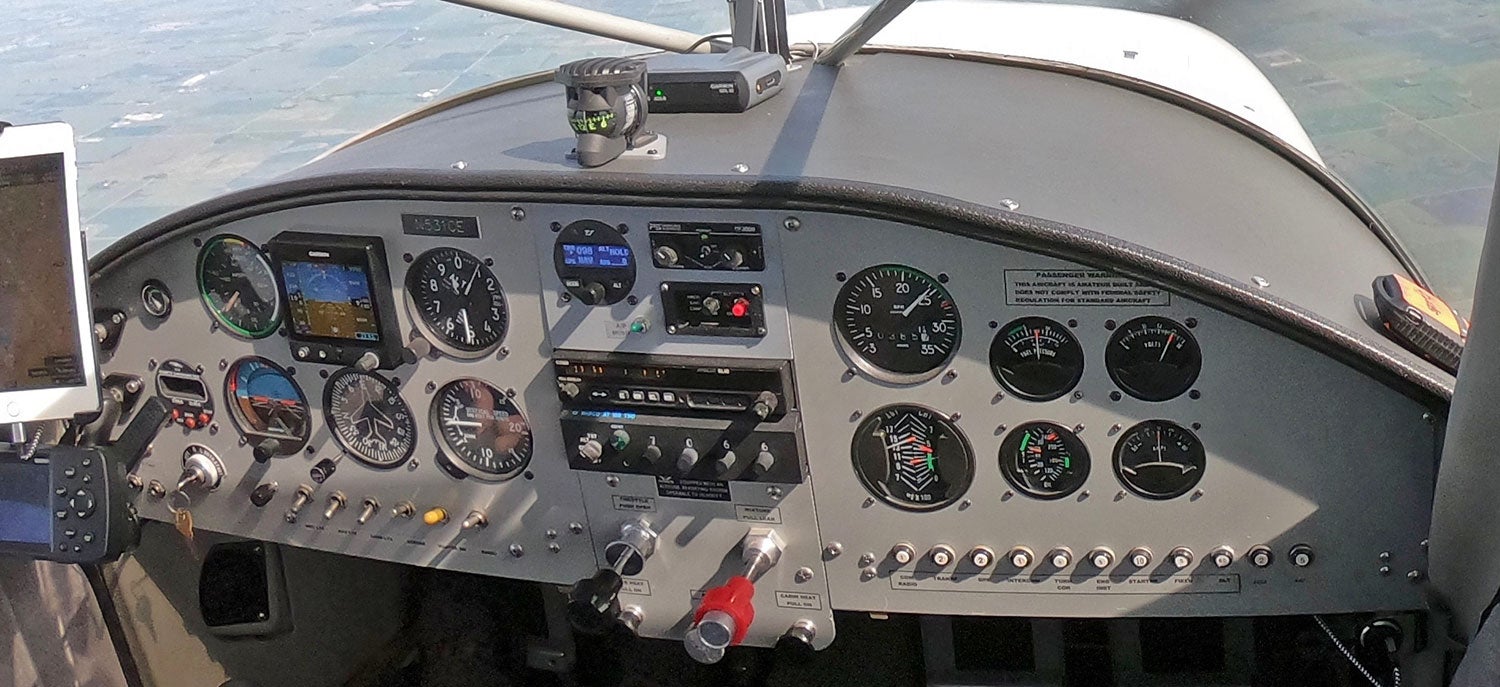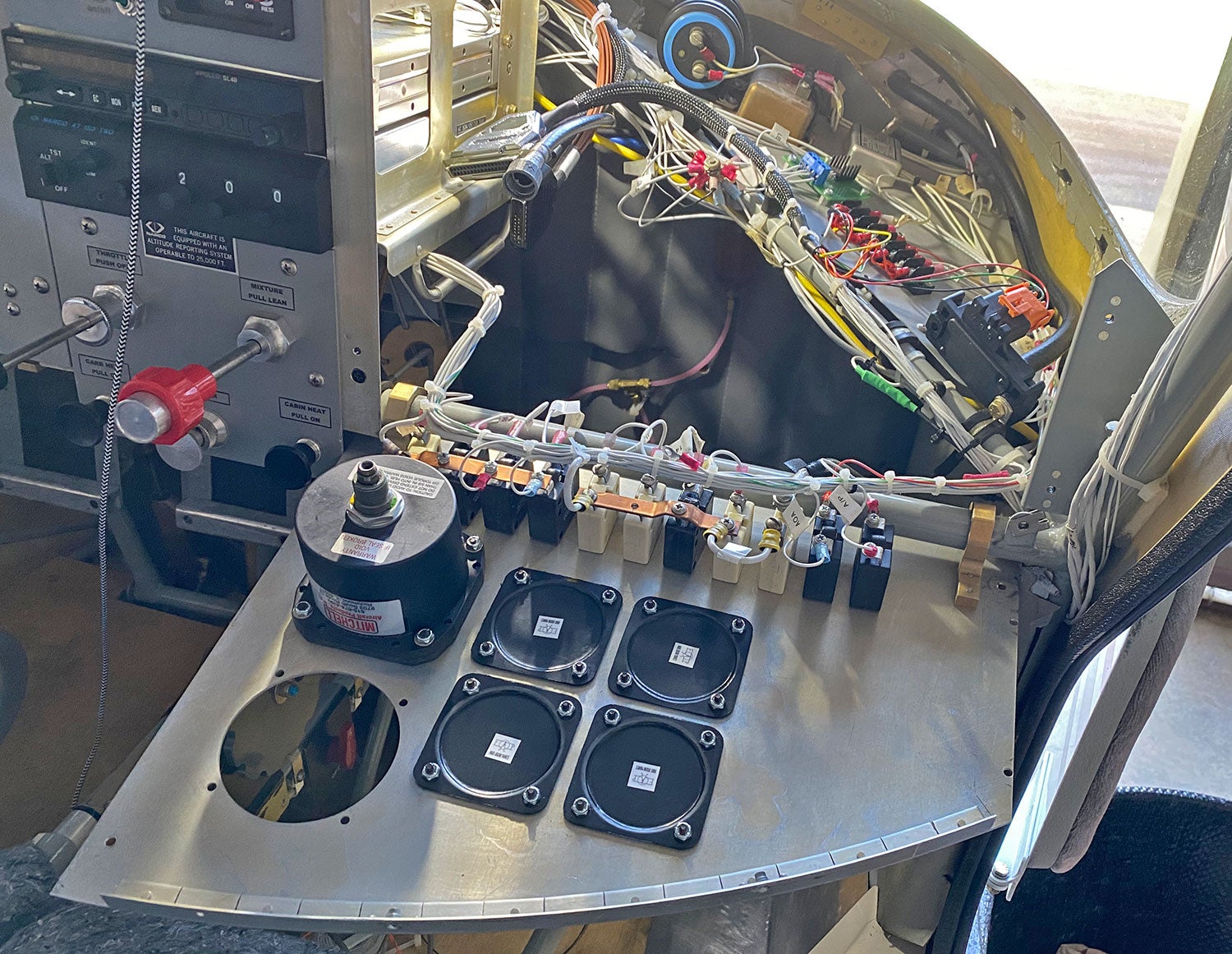Most builders largely follow the plans and most plans have some accommodation for future improvements and ongoing maintenance. Back in the tube-and-fabric days of production aircraft, many had very few inspection panels in the wing; the assumption was that you’d be in there every few years during a re-cover so why add the weight and complexity? Then longer-lasting fabrics and “dope” made it desirable to have some way to check for corrosion and various other hidden maladies between re-covers. Next thing you know, we have metal airplanes with inspection panels every few inches and hundreds of small machine screws (or, much worse, a pickle-jar full of PK screws!) Back in a previous life, I helped take care of a Mooney 231. Enough said.

It stands to reason that any part of the airplane that’s hard to get to once it’s complete should have some means of access, even if doing so is complicated and physically challenging. I spent many days upside-down in the cockpit of my Pulsar, shoulders barely fitting between the main-spar channel (under the knees of pilot and passenger) and the bottom of the panel. Once, probably after a long day working on the thing, I managed to get twisted and at first felt like I wasn’t going to get free. Of course, I got there in the first place, so I figured that unless I had suddenly grown, I was going to get out. But there was a moment of incipient panic. Followed by swearing.
That airplane had no access to the top of the panel since it rode right under the fuselage top skin, with the sliding canopy above that. And as I watch friends with RVs work their own contortions, I’ve been a tiny bit smug about the GlaStar and Sportsman. For the most part, you can work on the panel standing next to the airplane. Remove the glareshield and you have access to both the top and bottom. The only limitation is when you build avionics shelves back there that restrict “through” access, but if you do it right, it’s not a problem. Oh, and you have to constantly negotiate the time/space continuum with the sticks. I recently found photos of one of the many panel re-dos on my Sportsman and noted that for one of the most extensive, I’d gone ahead and pulled the sticks. Hey, I was smarter back then!
When I bought my GlaStar, Charlie Echo, the previous owner pointed out how the builder, Charlie Eubanks, had created a flip-down scheme for the two outer panel segments. At the time, I filed this away with a “yeah, that’s nice” kind of dismissiveness. My Sportsman had the fiberglass main panel with removable metal inserts, another way to get back behind the panel without having to go in through the top or up from the bottom. So, big deal.
Well, yes it is. I’m in the process of replacing the analog engine instruments and I’m here to tell you that being able to sit in the passenger seat with the metal panel flipped down, is a real luxury. Charlie built it so the wires attached to the circuit breakers has plenty of service loop, so the panel folds down more than 90°. A pair of hooks ride over the structural steel tube that spans the cabin below the panel, and four screws secure the panel to doubler plates when fully installed. Simple and brilliant.

Fact is that any homebuilt that lasts more than a few years—and we hope all of them do—is going to be subject to a number of whims over time: new technology, replacing old parts or just the desire of the next owner (or owners) to make the airplane their own. Pretty much anything you can do today, during the build, to make your project easier to maintain and upgrade in the future will be worth the few ounces added and hours they’d take now.
I wish I had done that with the Pulsar. I thought about making the Pulsar’s panel easily removable but got fixated on getting it flying rather than thinking about the future. After all, who could want more than a cheap, imported turn coordinator, analog engine gauges and a delightfully dot-matrix KLX 135A GPS/com?













